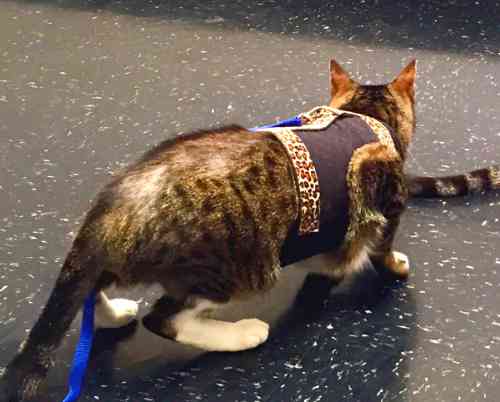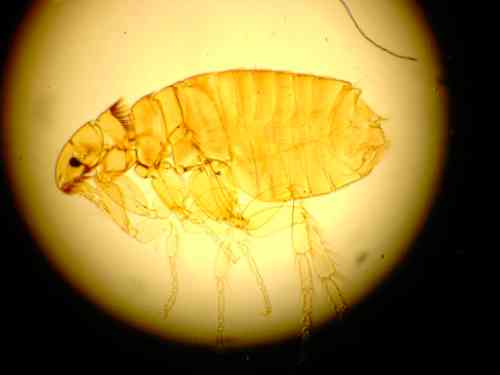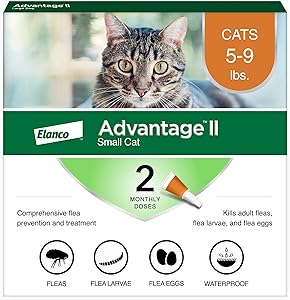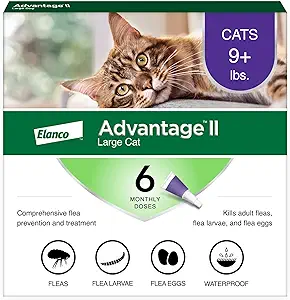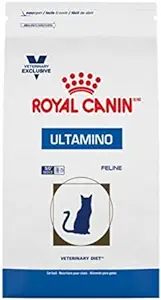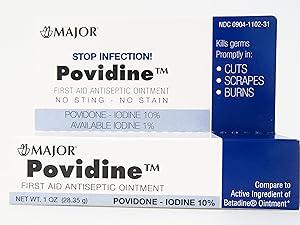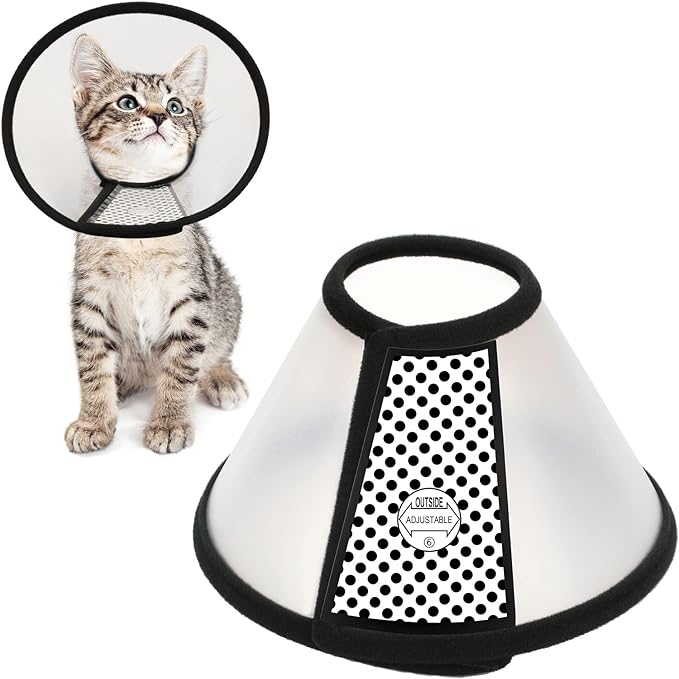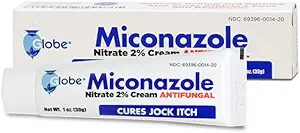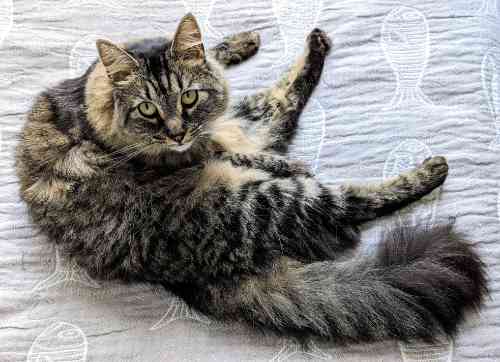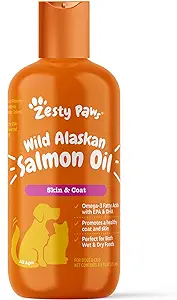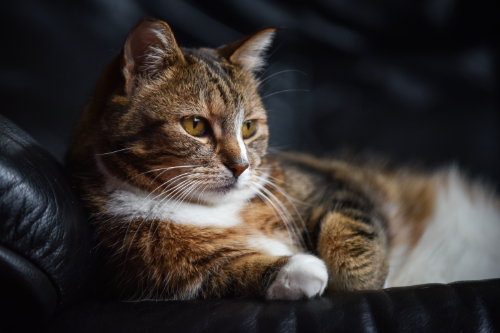Your cat has an itchy tail
Best home remedies
When your cat has an itchy tail, it often makes your cat very annoyed. And you as the owner also get the creeps from all that licking and biting at that tail. The reason for the itching is usually a flea allergy, but we also see other causes with some regularity. In this article we discuss the possible causes and how to treat them. This will hopefully help you quickly resolve the itching in your cat’s tail.
How do you recognize itching in your cat’s tail?
When your cat has an itch, he will lick and bite a lot at the area of the itch. In this case, if there is an itch on or near his tail, he will lick and bite a lot in that region. You will see that your cat is often a little irritated. After all, your cat will not be able to permanently resolve the itching near the tail.
Due to the amount of licking and biting to prevent the itching of his tail, the amount of hair in that area can also decrease considerably, resulting in a bald tail or buttocks.
What symptoms do you also see with itching on your cat’s tail?
- Lots of licking or biting on or near the tail
- Sometimes also inflamed skin
- Small scabs on the skin
- Decreased amount of hair
- Poor sleep due to itching
- Being grumpy due to lack of sleep
- Have more problems with hairballs
- Your cat doesn’t want to be touched
- Use the tail less
What causes itching in your cat’s tail?
Fleas: the most common reason for itching on a cat’s tail
In 90% of cases, there is a flea allergy when your cat has an itchy tail. A flea allergy is not the same as simply having fleas. When there are “normal” fleas, they walk over your cat and bite him to suck blood. That causes itching. But a flea allergy goes even further. In that case, there is an allergic reaction based on flea saliva that is injected into your cat when the flea bites. The biggest characteristic of a flea allergy is that the itching symptoms mainly occur on the tail and on the back around the base of the tail.
All it takes is 1 flea to bite your cat and introduce saliva into your cat, after which your cat will suffer from itching near its tail for about 7 to 10 days. And 1 flea is of course very easy to miss. That is why most people are convinced that it is not a flea problem. After all, they don’t see fleas. You can determine this with certainty by having a blood test carried out by your vet, but it costs approximately 100,- dollar. It is therefore much cheaper to use a good flea product and see whether the symptoms have disappeared after 2 weeks. We will tell you more about the treatment later in this article.
Mites
Mites can also cause itching on or near your cat’s tail. The mites that clearly cause itching is the scabies mite. They dig tunnels in the skin, causing itching in your cat. Often the skin is a bit balding, and a bit crusty and just doesn’t look that nice. However, mites are not clearly limited to one region and therefore rarely only cause itching on or around your cat’s tail.
Allergic reactions
In addition to the above-mentioned flea allergy, other allergies are sometimes the culprit for itching in your cat’s tail. If that is the case, it could be a food allergy, for example, but also an allergy to environmental substances such as tree pollen or grass pollen. In the case of an allergic reaction, your cat’s immune system overreacts to substances that should not be in your cat’s body. As a result of this excessive immune response, inflammation and itching can occur in the skin, including the skin of or near your cat’s tail. In most cases, however, you will also see itching or skin infections elsewhere on your cat’s body.
Hotspots (bacterial skin infections)
If a small wound has occured on the skin of your cat’s tail, this wound may get infected with bacteria that live on your cat’s skin. This will create a very itchy, wet spot. Also known as a hotspot. The hair can be licked off by your cat, but can also fall out on its own. Typically, a hotspot is very sensitive, itchy, red and, above all, very wet. Even if your cat hasn’t been able to lick it. It has a very rapid origin. Today it could be a spot of less than half an inch, tomorrow it could be a spot of up to 3 inch.
Ringworm or a fungal skin infection
In the case of a fungal infection, your cat’s tail may also itch, although this is not always the case. You can usually recognise a fungus by a round-shaped bald spot with somewhat crusty, dry skin. The skin often looks very red and that redness can clearly have the appearance of a ring. Hence the name Ringworm, although it is not a worm at all. It is a contagious disease that can also affect you as the owner and your housemates.
Impacted anal glands
When a cat has problems with his anal glands, you will mainly see him licking his anus, which is just under his tail. If the anal glands are very irritated, your cat will also have itching on its tail. In this case you can also see that your cat drags its anus a lot on the ground or other rough surfaces.
How do you treat itching on your cat’s tail?
Treating fleas and mites
To treat fleas you can use a flea product that has a strong repellent effect on fleas. Many products do kill fleas, but a flea must have bitten first. And you would prefer to avoid that in case of a flea allergy. So even before that, a flea has to think, “Gosh, what a bad smell. I’m not going there.” You can use Advantage for this, for example. You must apply this to your cat on a regular basis every month to prevent permanent itching in his tail.
However, most flea products do not kill mites. And since you are not completely sure of the cause of the itching, it is better to give a flea remedy that also kills mites. Unfortunately, you cannot buy these products in the pet store. You can get these at the counter of your vet (so without a consultation).
Allergic reactions
Of the allergic reactions, you can only treat the food allergy yourself. The allergy to environmental substances can only be diagnosed with the help of your veterinarian and will have to be treated with medication that is only available from your veterinarian.
A food allergy test does take a lot of time. Namely 8 weeks. You give your cat the following food and absolutely nothing else. So no products from your refrigerator or a tasty snack. Only this food. The ingredients in this food have been made so small that your cat’s immune system does not recognise them. But your cat’s body can of course still use them as building material. During the first 4 weeks of the test you will probably not see any change. The old nutrients from the previous diet still have to leave your cat’s body and this takes about 3 weeks. Your cat’s skin should then start to heal. So you can only notice a difference from the 4th week onwards.
If you notice a difference, your cat most likely has a food allergy. You can then leave him on this diet for the rest of his life. In addition, you can offer him a new type of food or treat every month and see if the itching in your cat’s tail returns. If so, then he is allergic to that product.
Do you not notice a difference after 8 weeks? Then it won’t happen ever. Your cat does not have a food allergy. You will have to continue looking for the cause.
Hotspot
Has the bald, itchy spot near your cat’s tail gotten bigger very quickly and looks very red? Then a hotspot has probably emerged. In this case, it is best to cut away the hair around the hotspot (at least an inch) and then apply iodine ointment to the area 3 times a day for 7 days. Make sure that your cat can’t lick it, because it can cause diarrhea.
Ringworm
If you think your cat may have Ringworm, you will see a round bald spot that may be a bit itchy. The skin in that area may be somewhat red, but usually also looks very dry and somewhat crusty. In this case it is best to go to your vet. This may prescribe an oral fluid that will tackle the fungus. If you wish, you can also treat the area with miconazole nitrate cream. There is only a chance that new spots will appear on the rest of your cat’s body while you are treating this area. That is why it is wiser to take your cat to the vet for the oral treatment.
Impacted analglands
Is the itching mainly around your cat’s anus? Then it is best to empty his anal glands. More information about this problem can be found on the page that discusses impacted anal glands.
When should you go to the vet if your cat’s tail is itchy?
If the itching near your cat’s tail is not too bad, you can treat a number of things yourself at home. However, if the itching is intense, it is better to take your cat with his itchy tail to your vet. This can prescribe very strong itch-relieving medications, but can also immediately conduct further research into the cause of the itching. Naturally, the faster your cat gets rid of his itching, the more pleasant this is for him. But it also prevents him from licking or biting his skin further and causing additional medical problems. Better safe than sorry!
How else can you help a cat with an itchy tail?
Salmon oil or Omegaderm
Salmon oil or Omegaderm contain a lot of omega-3 fatty acids. According to research conducted by Hyun Joo Park, Jean Soon Park, Michael G. Hayek, Gregory A. Reinhart and Boon P. Chew, omega-3 fatty acids provide better strenght in your cat’s skin and inhibit inflammation in your cat’s skin. With any form of skin problems, it is therefore wise to give your cat extra salmon oil or Omegaderm.
Honey ointment
Honey ointment prevents bacteria from growing properly and stimulates wound healing. This is evident from the research conducted by Khaled Hussin, Asma .W, Mohamed Imdakim and Marwan Saleh. So if your cat not only has itching near its tail, but also small wounds as a result of licking, it is wise to rub this area with honey ointment. This way the wounds will heal faster. Provided, of course, that the original cause is resolved.
Luna’s story: a case study
Background
Luna, a 4-year-old spayed European Shorthair, suffered from persistent scratching and biting due to itching near her tail. This caused visible baldness and skin irritation. The owner couldn’t figure out what the cause was and asked our vet Nanda for advice.
Diagnosis
Based on photos and a conversation with the owner, it was determined that Luna suffered from a reduced amount of hair around the base of the tail and several small scabs on the skin of the back near the tail. The owner was instructed by veterinarian Nanda to look carefully for any fleas with a flea comb. The gentleman could not find any fleas, but did find some sand-like grains in the fur. On Nanda’s advice, he put these grains on a white paper and wiped over them with a wet finger. This turned out to be flea droppings. After all, flea poop gives a red-brown streak and soil a black-gray streak. The provisional diagnosis was that Luna most likely had a flea allergy.
Therapy
Since Luna’s owner did not have much to spend financially and the chance of a mite problem did not seem that big, the owner initially decided to treat with Advantage. He put the drops in Luna’s neck and will repeat this every month for at least the next 3 months.
Nanda also advised giving Luna salmon oil in her diet. Salmon oil contains a lot of Omega-3, which prevents inflammation and improves the skin’s resistance. As a result, Luna will be less likely to suffer from her flea allergy. The crusty skin did not seem to be an additional problem for Luna that needed an extra treatment. That is why it was decided, due to the finances, not to apply honey ointment to Luna’s irritated skin for the time being.
Follow-up
After a week, vet Nanda asked if the owner of Luna had noticed a difference in her itching. And fortunately this was the case. However, only just one day. Luna had clearly scratched less the day before, but slept a lot according to the owner. Nanda said that a cat can have difficulty sleeping due to itching and that Luna was probably very tired. As long as she behaves cheerfully when she is awake and wants to eat and drink well, she will probably behave normally again after 2 to 3 days. And fortunately this turned out to be the case after a few days.
Conclusion
So Luna indeed had a flea allergy and will have to take a flea medication every month for the rest of her life. This is the only way to minimize the chance that a flea will bite her and prevent itching around her tail and buttocks.
Good luck to you and your cat with itchy tail!
Hopefully the advice we have given you in this text will yield quick results and your cat will soon no longer have itching on or near its tail. In any case, good luck and success in treating your cat.

